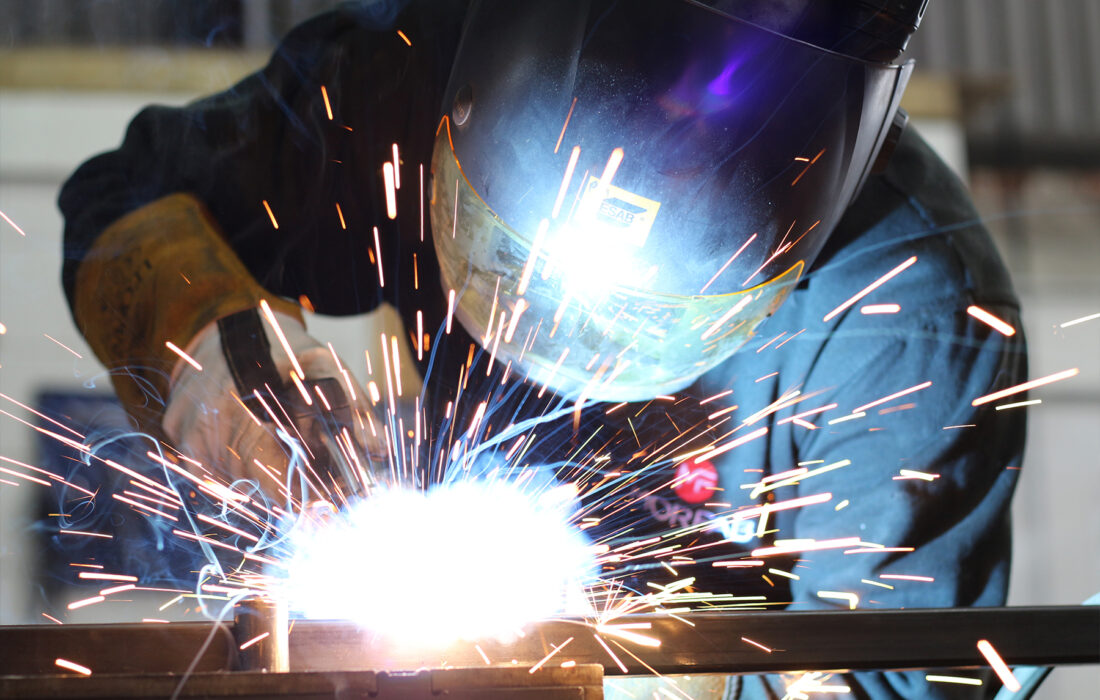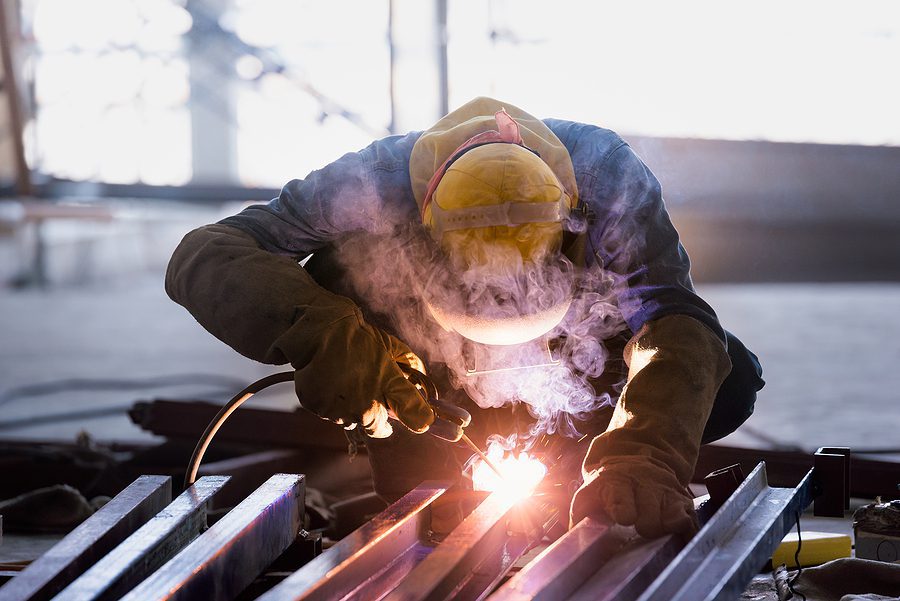Common Welding Fixing Issues and Just How to Address Them Efficiently
Welding repair services commonly run into a variety of issues that can threaten the stability of the last item. Common troubles consist of insufficient infiltration, porosity, and misalignment, amongst others. Each defect offers unique obstacles that need specific techniques for resolution. Recognizing these problems is crucial for welders intending to boost their skills and end results. This conversation will certainly explore these typical welding repair service issues and effective techniques to address them.
Insufficient Penetration
Poor infiltration takes place when the weld metal stops working to fully fuse with the base material, resulting in weak joints and prospective structural failings. This issue commonly comes from insufficient warm input, inaccurate electrode angle, or improper welding rate. Welders might come across inadequate infiltration as a result of a miscalculation of the necessary criteria for a specific material density or type. Furthermore, contamination on the base material's surface area can impede efficient bonding, aggravating the trouble. To deal with poor penetration, welders ought to assure ideal settings on their devices and keep a tidy work surface. Regular evaluation of welds is recommended to recognize any deficiencies early, enabling prompt modifications and the avoidance of endangered architectural honesty in welded settings up.
Porosity
Porosity is a common flaw in bonded joints that materializes as little gas bubbles entraped within the weld steel. This defect can compromise the stability of the weld, leading to lowered strength and potential failure under stress. Belgrade Welding. Porosity normally emerges from contamination, wetness, or improper welding methods, which enable gases to leave into the molten weld pool. To deal with porosity, welders need to ensure appropriate surface preparation, preserve a clean workplace, and make use of ideal welding specifications. In addition, choosing the best filler product and protecting gas can alleviate gas entrapment. Regular assessment and testing of welds can assist identify porosity early, assuring timely restorative activities are taken, thereby preserving the top quality and reliability of the welded framework
Imbalance
Misalignment in welding can arise from various aspects, including improper arrangement and thermal development. Comprehending the source is necessary for reliable resolution. Numerous improvement strategies are available to straighten components and ensure structural stability.
Reasons for Imbalance
Welding misalignment commonly stems from a selection of underlying concerns that can compromise architectural integrity. One key cause is incorrect fit-up of elements prior to welding, which can cause voids and uneven surfaces. Variants in thermal development throughout the welding process can additionally cause distortion, specifically if the materials being signed up with have different coefficients of expansion. Additionally, poor clamping and fixturing might fall short to hold components firmly in position, leading to movement during welding. Badly kept devices, consisting of welding makers and tools, might introduce disparities in the weld grain, further contributing to imbalance. Finally, driver mistake, coming from inadequate training or experience, can also play a substantial duty in producing misaligned welds.
Correction Techniques Available
Attending to misalignment successfully calls for a mix of rehabilitative techniques tailored to the specific concerns handy. One common technique is using components or jigs to hold components in the proper position during welding, ensuring constant alignment. Additionally, preheating the materials can help in reducing distortion and enhance fit-up. For substantial misalignment, mechanical adjustment techniques, such as making use of hydraulic jacks or clamps, can be employed to deal with the position prior to welding. Post-weld warmth therapy might likewise be essential to soothe anxieties created by imbalance. Ultimately, careful examination and adjustment throughout the configuration phase can avoid misalignment issues from ending up being considerable issues, promoting a smoother welding procedure and enhancing total architectural honesty.
Distortion
Distortion is a common challenge in welding that can arise from various aspects, consisting of unequal heating & cooling. Comprehending the causes of distortion is crucial for implementing efficient prevention techniques. Addressing this issue not just boosts structural stability however additionally improves the general quality of the weld.
Causes of Distortion
When subjected to the extreme warm of welding, materials commonly undertake changes that can result in distortion. This sensation primarily arises from thermal development and tightening during the welding procedure. As the weld area warms up, the product increases; upon cooling, it gets, which can create internal anxieties. On top of that, irregular heating across a workpiece can worsen these stresses, leading to bending or bending. The kind of material also plays a significant duty; steels with varying thermal conductivity and coefficients of expansion might respond in a different way, causing unforeseeable distortions. Bad joint layout and inadequate fixturing can add to misalignment throughout welding, boosting the likelihood of distortion. Understanding these reasons is essential for reliable welding repair service and prevention approaches.
Avoidance Techniques
Effective prevention strategies for distortion during welding focus on regulating heat input and making sure correct joint design. Maintaining a consistent heat input assists to reduce thermal expansion and contraction, which can lead to distortion. Making use of strategies such as pre-heating the work surface can also minimize the temperature level slope, advertising consistent heating. In addition, picking appropriate joint layouts, such as T-joints or lap joints, can enhance security and reduce tension focus. Implementing correct fixturing to secure the workpieces in location further help in maintaining positioning throughout the welding process. Lastly, staggered welding sequences can distribute warmth much more uniformly, preventing local distortion. By applying these strategies, welders can substantially lower the look at this site likelihood of distortion and boost the total high quality of their welds.
Splitting
Cracking is a typical concern experienced in welding repair work, usually resulting from numerous elements such as improper air conditioning rates, material option, or insufficient joint preparation. The occurrence of fractures can substantially compromise the honesty of the weld, causing prospective failures during operation. To address this concern, welders have to first examine the source, making certain that products work and suitably picked for the certain application. In addition, managing the cooling rate throughout the welding procedure is necessary; fast cooling can induce stress and lead to breaking. Appropriate joint design and preparation also contribute to decreasing the risk. Executing these strategies can enhance weld top quality and resilience, ultimately decreasing the likelihood of fracturing in completed weldments.

Insufficient Combination
A substantial problem in welding repair work is insufficient fusion, which takes place when the weld metal does not appropriately bond with the base product or previous weld passes - Montana Mobile Welding and Repair Belgrade. This issue can result in weak points in the joint, possibly compromising the stability of the bonded structure. Factors contributing to insufficient combination include inadequate heat input, improper welding technique, and contamination of the surface areas being signed up with. To address this issue properly, welders ought to guarantee correct pre-weld cleansing and surface prep work, as well as readjust their welding specifications to achieve appropriate infiltration and blend. Normal assessment throughout the welding process can view additionally assist identify incomplete fusion early, permitting timely restorative measures to improve the general top quality of the weld
Overheating
While welding fixings can enhance structural integrity, overheating provides a considerable difficulty that can lead to material degradation. Extreme heat during welding can change the mechanical homes of metals, leading to minimized stamina, boosted brittleness, and warping. This sensation is particularly essential in high-stress applications where architectural reliability is paramount. Recognizing getting too hot can entail aesthetic examinations for staining or distortion, in addition to checking temperature during the welding process. To minimize the risks connected with getting too hot, welders ought to utilize proper strategies, such as controlling warm input, readjusting travel rate, and using suitable filler products. Furthermore, carrying out pre- and post-weld warm treatments can assist bring back product residential or commercial properties and enhance the general quality of the wikipedia reference fixing, guaranteeing long-lasting performance and safety.
Often Asked Concerns
What Are the Common Indications of a Welding Issue?

How Can I Evaluate My Welds for Quality?
To examine welds for top quality, one can use visual assessments, ultrasonic screening, and radiographic techniques. Each technique assures structural honesty, determines defects, and validates adherence to defined standards, ultimately boosting the integrity of the welded joints.
What Safety Precautions Should I Take While Welding?
When welding, one must focus on security by wearing appropriate individual safety equipment, making sure correct ventilation, protecting combustible materials away, maintaining a clean work space, and knowing surroundings to avoid mishaps and injuries.
Can I Repair a Weld Without Redoing the Entire Joint?
Fixing a weld without redesigning the whole joint is feasible, depending upon the damage (Montana Mobile Welding and Repair Fabrication). Methods such as grinding, including filler product, or utilizing a welding process can properly resolve particular problems while maintaining the surrounding framework
What Devices Are Important for Efficient Welding Fixes?
Vital tools for effective welding fixings consist of a welding maker, cord brush, mill, protective equipment, clamps, and filler products. Each tool plays a crucial function in making certain quality and safety during the repair service procedure. Porosity commonly develops from contamination, dampness, or inappropriate welding strategies, which enable gases to get away right into the molten weld swimming pool. Inadequately conserved tools, including welding equipments and tools, may introduce inconsistencies in the weld grain, further adding to imbalance. When subjected to the intense warm of welding, materials typically undertake modifications that can lead to distortion. Cracking is an usual concern experienced in welding fixings, typically resulting from numerous factors such as inappropriate air conditioning rates, material choice, or inadequate joint preparation. A substantial issue in welding repairs is incomplete blend, which occurs when the weld steel does not sufficiently bond with the base material or previous weld passes.